Collar for insertion into the water supply system:
In this article, we will talk about what constitutes and how the hose clamp is used for tapping into the water supply system under pressure. The topic of the article is universally relevant, since the devices in question are the most common module used when connecting to central water supply systems.
With the right approach to the choice of this accessory and with proper use of it, you can do the installation of the pipeline with your own hands, using a simple and widely available tool.

Application features

To begin with, we will decide on the instructions for using the mortise clamps. Most modern plumbing is assembled using polyethylene pipes. Thus, the need to use traditional welding is absent and for tie-in you can do with a special clamp.
As a result of the installation work with the use of such accessories, it is possible to achieve optimum strength of the connection of the outlet and the main.
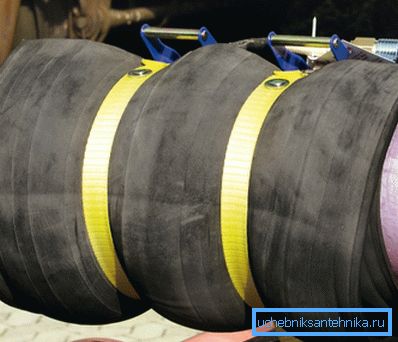
Note! Repair clamps for water pipes are used when there is no opportunity to shut off the flow of the transported medium and have to work under pressure.
The quality of the installation work depends not only on the skills and practical experience of the installer, but also on the correct selection of devices intended for the tie-in.
Consider the main categories of clamps permuted on the market.
The range of the most popular clamps
Based on the particular configuration of the pipeline and in accordance with the type of materials used in its assembly, certain categories of mortise clamps are selected.
Consider the range of modifications presented on the market:
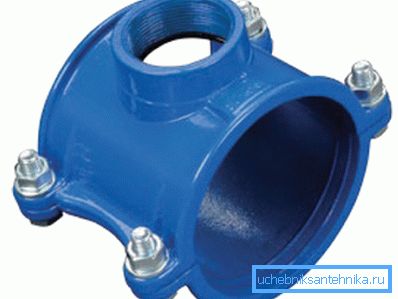
- The clamp-holder is used to connect to the water mains is not under pressure. The design of the device consists of two parts, one of which is equipped with a branch with internal thread. Installation of the accessory on the highway and installation is carried out by means of bolts. On the market are modifications of the holder, made of plastic or metal.
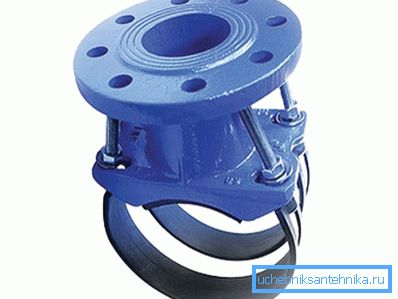
- Saddle collar is used for tie-in asbestos-cement, metal and plastic pipelines. In contrast to the "clip", the device consists of one main part - the "saddle", which is fixed on the pipe with a flexible tightening bracket. Most of these devices are made of metal. Saddle clamps are versatile, as they can be used to attach to the line and under pressure and without pressure.
- Zasverlovochny clamp specially designed for tapping into pipelines operated under high pressure.
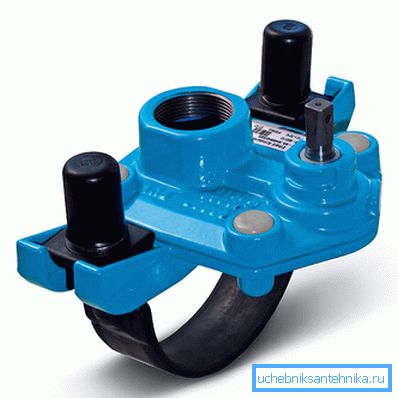
The device is a modular module, equipped with special nozzles and swivel connectors. This type of device can be installed on plastic, cast iron and steel pipelines.
Important: For the installation of drill bits, special equipment is required.
- Electrowelded saddle-saddle is designed exclusively for tapping into plastic pipelines. The design of the device includes components such as a milling cutter for drilling polymer surfaces and a heating coil.
Features inserts in polyethylene pipes
Polyethylene is a plastic material, and therefore tapping into the trunk can be done in several ways using easy-to-use equipment. Due to the relative ease of installation work, the price of the finished result is low.
Consider the most popular and popular ways to conduct tie-ins. Installation by drilling a hole of a suitable diameter with a crown or drill, followed by installation of a tap.
This method is the simplest, but under one condition: it is desirable to carry out installation work with a minimum or zero pressure of the transported medium. Again, this method does not imply the need to purchase expensive clamps, as any will come off, but with a tap corresponding to the diameter of the pipes.
Installation instructions for the following:
- A trunk is being dug up and a trench is being prepared for removal.
- The diameter of the line is measured to determine the exact size of the clamp.
Important: The clamp is chosen so that its internal diameter in the established position was a couple of millimeters smaller than the external diameter of the pipeline. Only in this case, you are guaranteed to get a connection with a high degree of tightness. Again, the crown that will be used when drilling should be per millimeter of the already selected outlet.
- Since there is no pressure in the system, we first drill the necessary hole and only after that we put on the saddle and tighten the bracket. Do not forget to put a rubber gasket under the bracket and the saddle, which at the same time will provide greater efficiency of tightening and allow you to achieve the optimum degree of tightness of the connection.
If installation work is carried out on the pipeline under pressure, a welded pipe joint is used. In this case, you need special equipment that supplies current to the welded coupling mounted on top of the pipe.
Features inset in cast iron pipes
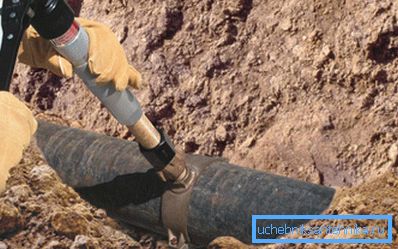
In spite of the fact that today there are less and less iron pipelines, they are still there. Therefore, sometimes it becomes necessary to connect to pipes of this type. How to do it right?
Before proceeding with the installation, it should be understood that cast iron is a special metal with special physicochemical properties. For example, as a result of excessive mechanical stress, cast iron products crack or crumble.
Therefore, when drilling holes for connecting branches, a special drill with a sharpening angle of 116-118 degrees and straight grooves is used. If it is planned to drill a hole for the required diameter in one step, a crown with soldered carbide plates is used.
Important: It does not matter what type of drilling equipment is chosen, since any drill must be continuously cooled during the drilling process. As a coolant, you can use special oils or just water.
The insert in the cast iron is made with the use of metal clamps, and with the use of their plastic counterparts, which are also strong and durable.
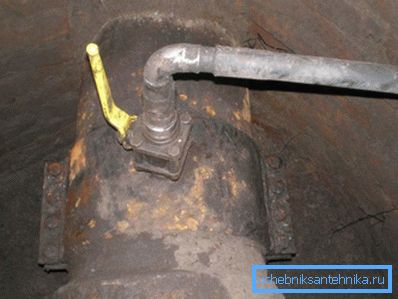
The section of the pipe on which the connection will be made is thoroughly cleaned from possible contamination and degreased. Next, the area of pure metal is covered with a layer of sealant, or the rubber layer is placed on this place.
Next, the clamp is applied in such a way that the opening for removal coincides with the hole made in the pipe wall. In the event that the tie-in is performed under pressure, devices designed specifically for this type of installation are used.
Important: Installation of taps on the pipeline under pressure requires obtaining special permits in the respective organizations. In some cases, insertion under pressure should be carried out with the participation of qualified professionals.
Conclusion
Now that you know what clamps for the repair of water pipes are, it will probably be easier for you to choose the necessary equipment for use in private households.
Have any questions? Necessary explanations can be obtained by watching the video in this article.